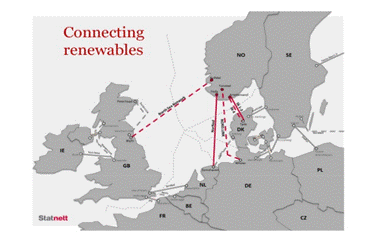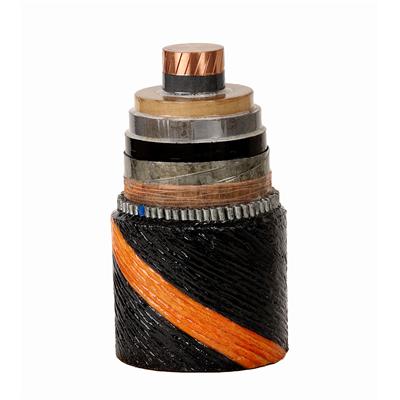|
 Fiber optic cable
has been laid around the world's ocean to enable real-time communication and
high-speed internet connections. We do the same with underwater high-voltage
cable to link energy systems between nations. High-voltage direct current
(HVDC) cable can safely transfer bulk energy over hundreds of kilometers — crossing large bodies of water. Fiber optic cable
has been laid around the world's ocean to enable real-time communication and
high-speed internet connections. We do the same with underwater high-voltage
cable to link energy systems between nations. High-voltage direct current
(HVDC) cable can safely transfer bulk energy over hundreds of kilometers — crossing large bodies of water.
There are dozens of existing projects in the Baltic Sea,
Mediterranean Sea, the Cook Strait (New Zealand), Bass Strait (Australia) and
the Philippine Islands.
Special cable laying vessels use submersible robots to dig
the trench, lay the cable and refill the trench — so it is safe from ship
anchors and fishing nets. The electrical conductors are wrapped multiple times
with insulation, rubber and metal sheathing for protection.
 The latest Nordlink project to connect Norway to Germany
will enable hydropower to supply the European grid. Solar and wind from
Germany can also move north into Scandinavia. Norway's Energy Minister
calls this a cornerstone of the renewable revolution. The latest Nordlink project to connect Norway to Germany
will enable hydropower to supply the European grid. Solar and wind from
Germany can also move north into Scandinavia. Norway's Energy Minister
calls this a cornerstone of the renewable revolution.
While we see bi-national cooperation on every
continent — usually overhead transmission across borders, we can also link
across large bodies of water. These unseen, underwater projects yield
economic, energy and environmental rewards for decades.
"We must see the problem as
a whole. We must understand and explain to all other men on our planet that the
interconnection between power systems of different countries is one of the
important tasks for all humanity." Victor Yershevich, Director of
Science, Energoset Project
In Partnership for the Planet, |